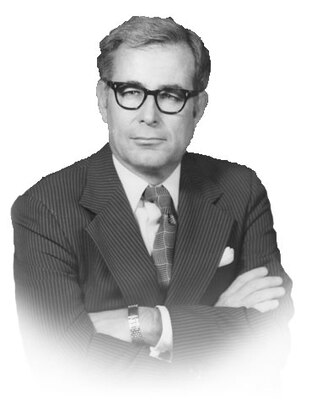
WASHINGTON —
Harold Brown, the 14th secretary of defense and the first scientist to hold the position, died Jan. 4 at his home in Ranch Santa Fe, California. He was 91.
Leading the Defense Department from 1977 to 1981 under President Jimmy Carter, Brown tapped into his experience as Air Force secretary under President Lyndon B. Johnson during the Vietnam War and as director of U.S. Defense Research and Engineering during President John F. Kennedy’s administration.
“Dr. Brown led a remarkable life, first as an academic and scientist, and then as a public servant in a variety of prominent roles. … He shaped our nation’s military for more than two decades, revolutionizing the development of naval munitions, renovating America’s post-Vietnam War weapons platforms, developing stealth aircraft and leading nuclear weapons research,” Acting Defense Secretary Patrick M. Shanahan said in a statement.
“As secretary of defense, Dr. Brown’s steady leadership piloted our nation through a consequential segment of the Cold War,” Shanahan said. “His focus on deterrence through a strong nuclear triad facilitated long-term peace and stability in the United States and Europe.”
Brown’s career encompassed science, academia, government and private industry, and it spanned 10 presidencies.
Strategically, he sought to enhance U.S. military forces and strengthen security with a focus on arms control, including support of the 1979 SALT II Treaty and the Strategic Arms Limitation Talks that curtailed U.S. and Soviet militaries to 2,250 strategic nuclear delivery vehicles. He espoused “essential equivalence” a principle that Soviet strategic nuclear forces would not become usable instruments of political leverage, diplomatic coercion or military advantage if nuclear stability was maintained and U.S. and Soviet force characteristics remained balanced.
Attention to Weapon Systems
Brown’s attention to weapon systems — including intercontinental ballistic missiles, submarine-launched ballistic missiles and strategic bombers — influenced major administration decisions, including Carter’s backing of the MX or LGM-118 Peacekeeper missile, intended to replace the Minuteman and Titan intercontinental missiles increasingly susceptible to a Soviet first strike in the mid-1980s.
Brown also was a proponent of upgrading B-52 bombers by equipping them with air-launched cruise missiles, and he green-lit development of stealth technology that enabled the production of aircraft with very low radar profiles.
In allied force matters, Brown saw NATO’s fortification as a critical national security objective, prompting him to reinvigorate the organization with the “3 percent solution.” The strategy had NATO members pledge in 1977 to increase their individual defense spending 3 percent per year from 1979 to 1986. The overall goal, according to Brown, was to ensure that alliance resources and conventional and nuclear capabilities would balance those of the Soviet bloc.
In 1978, NATO leaders endorsed a long-term defense program that included priority categories such as enhanced readiness, rapid reinforcement, stronger European reserve forces, and improvements in maritime capabilities – most that remain in current-day policies.
Strengthening U.S. Ties
Brown advocated strengthening U.S. ties outside of NATO, particularly with Japan and South Korea. He often urged a plus-up of Japan’s defense budget to facilitate the nation taking on a greater portion of the Western allies’ Pacific security obligations.
As the Carter administration opted for a phased withdrawal of U.S. ground forces from South Korea in 1977, military and other aid there continued. North Korean military forces later built up, and opposition to the troop withdrawal in the United States increased, prompting the president to abandon the plan, leaving about 40,000 U.S. troops in South Korea.
As the first American defense secretary to visit China and establish military-to-military relations, Brown played a key role in the United States formally recognizing the People’s Republic of China in 1979, nearly 30 years after its establishment.
Middle East affairs also proved complex, and Brown played a key part as conciliator in the Egyptian-Israeli negotiations leading to the Camp David Accords, the culmination of a 14-month effort to develop bilateral agreements between the two nations that ultimately led to a peace treaty the following year.
In 1980, Brown stood up the Rapid Deployment Joint Task Force at MacDill Air Force Base, Florida. The headquarters could activate forces from several services and command them in crisis situations while developing contingency operations plans and maintaining capabilities and readiness.
After leaving the Pentagon, joined the Johns Hopkins University School of Advanced International Studies as a visiting professor and later the university’s Foreign Policy Institute as chairman. He continued to speak and write widely on national security issues, and in 1983 published “Thinking About National Security: Defense and Foreign Policy in a Dangerous World.” In later years, Brown was affiliated with research organizations and served on the boards of a number of corporations.



